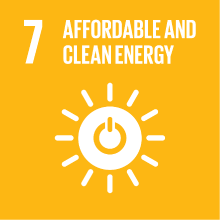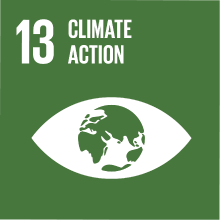EARTH SCIENCES: PRINCIPLES AND LABORATORY - 1 - THEORY
- Academic year
- 2025/2026 Syllabus of previous years
- Official course title
- FONDAMENTI DI SCIENZE DELLA TERRA E LABORATORIO - 1 - ATTIVITA' TEORICA
- Course code
- CT0592 (AF:566434 AR:318182)
- Teaching language
- Italian
- Modality
- On campus classes
- ECTS credits
- 0 out of 12 of EARTH SCIENCES: PRINCIPLES AND LABORATORY
- Degree level
- Bachelor's Degree Programme
- Academic Discipline
- GEO/08
- Period
- 2nd Semester
- Course year
- 1
- Where
- VENEZIA
- Moodle
- Go to Moodle page
Contribution of the course to the overall degree programme goals
• Modules 1 and 3: theoretical lectures on mineralogy, petrography, and geological processes;
• Modules 2 and 4: practical exercises, laboratory work, and field trips focused on rock identification and geological mapping.
The course provides the foundation for understanding the structure and dynamics of Planet Earth, with particular focus on mineralogy, petrography, geochemistry, and the distribution of exposed rock types. It also explores topics such as sedimentology, stratigraphy, geomorphology, and structural geology, with reference to climatic and environmental conditions.
The teaching approach combines theory, practical activities, and fieldwork. Acquired skills are assessed through written and oral exams, practical tests in rock identification, and interpretation of topographic and geological maps.
The course helps develop professionals capable of interpreting the geological and physical features of the territory and collaborating effectively with experts in the environmental sector.
Module 1 focuses on the study of the materials forming the Earth's crust, analyzing their properties, their physical and chemical characteristics and their interaction with the atmosphere, the hydrosphere and the biosphere. In particular, Module 1 deals with the study and classification of minerals, the various types of rocks present in the Earth's crust (magmatic, sedimentary, metamorphic) and the lithogenetic cycle.
Expected learning outcomes
1. Knowledge and understanding
1a. Knowing the basic concepts and appropriate terminology used in Earth Sciences;
1b. Understanding the chemical-physical processes that generated the various types of rocks;
1c. Understanding the geological, geographical and climatic factors of physical degradation, chemical alteration and erosion of rocks;
1d. Use the knowledge acquired in the frontal lessons in the analysis of natural resources and the vulnerability of the territory using specific and interdisciplinary laboratories to be carried out in the field;
1e. Understand the environmental dynamics, the processes inside the Earth and their external effects.
2. Ability to apply knowledge and understanding
2a. Knowing how to correctly use terminology and geological principles in all the processes of application and communication of Environmental Sciences;
2b. Knowing how to identify the geological processes that shaped the planet and understand its mechanisms and products;
2c. Knowing how to identify and describe the most common types of rock, their mineralogical composition, their properties and the formation environments;
2d. Knowing how to describe the physical and chemical degradation processes of rocks;
3. Ability to judge
3a. Knowing how to formulate and argue hypotheses on the basis of the concepts learned during teaching;
3b. Knowing how to apply knowledge and tools of Earth Sciences to explain the shape, composition and properties of the Earth system;
3c. Knowing how to apply a critical and multidisciplinary approach;
4. Communication skills
4a. Knowing how to communicate the concepts learned in the geological field, using appropriate terminology;
4b. Knowing how to interact with different professional figures that a graduate in Environmental Sciences will find along his/her professional career, such as biologists, chemists, geologists, doctors, epidemiologists, as well as with figures of non-scientific fields (politicians, economists, etc.);
4c. Knowing how to simplify and summarize the concepts of Earth Sciences to the general public, using simple and direct terminology;
5. Learning skills
5a. Knowing how to apply the concepts learned in the classroom to real case studies;
5b. Knowing how to read the geological and environmental processes that have shaped a territory;
5c. Knowing how to critically consult the reference texts and know how to interpret the bibliography that will be proposed during the didactic path.
Pre-requirements
Contents
Part 1 (introduction) deals with the structure of the Earth (and its subdivisions) and briefly describes the theory of plate tectonics to define the different geodynamic environments.
Part 2 (elements of mineralogy) describes minerals and their properties. The amorphous state and the crystalline state, the crystallization process are studied and the elements of symmetry, the law of symmetry and crystalline systematic are introduced. The atomic structure of the minerals is presented, isotropy and anisotropy are explained, the various classes of minerals are described (silicates, carbonates, oxides, sulphides, sulphates). The main structures and groups of silicates are defined (neso-, soro-, ino-, phyllo-, and tecto-silicates). The physical properties of minerals, specific gravity, melting point, hardness, cleavage, toughness, gloss, transparency, color, refractive index, piezoelectricity and magnetic properties are examined. Polymorphism, isomorphism and vicariance are described.
Part 3 (elements of petrography) describes the rocks present in the Earth's crust (magmatic, sedimentary and metamorphic rocks). It explains the chemical composition, minerals and classification of intrusive and effusive magmatic rocks. Classification diagrams of magmatic rocks are presented. The crystallization of the magma is described and the Bowen reaction series is analyzed. The sedimentary process is introduced: meteoric degradation, the main types of chemical alteration of the rocks, transport of unconsolidated material, sedimentation and diagenesis. Minerals of sedimentary rocks are introduced, with an in-depth analysis on clay minerals. The main types of sedimentary rocks and their chemistry are described. The metamorphic process (regional, contact metamorphism) and the main types of metamorphic rocks are described.
Part 4 (geodynamic environments) briefly describes the lithogenetic cycle during exogenous and endogenous processes in the different geodynamic environments. The geological forms of volcanic bodies and plutonic intrusive bodies are analyzed.
Referral texts
Grotzinger, J.P., Jordan, T.H. Capire la Terra. Terza edizione italiana condotta sulla settima edizione americana, Zanichelli, 2016. ISBN: 978-8808821232 [https://www.zanichelli.it/ricerca/prodotti/capire-la-terra-grotzinger-jordan ]
It is also recommended to consult an optional supplementary textbook for further study.
Klein, C., Philpotts, A.R. Mineralogia e petrografia. Prima edizione italiana condotta sulla seconda edizione inglese, Zanichelli, 2018. ISBN: 978-8808320605
[https://www.zanichelli.it/ricerca/prodotti/mineralogia-e-petrografia ]
The textbooks are available at the Science Area Library.
Assessment methods
Exam. The exam of Module 1 will be hold together with Module 2 and consists of an oral test divided into two parts. In the first part, students have to recognize and describe a rock provided on the day of the exam. All the rocks belong to the collection of the geo-mineralogy lab and can be consulted by students during Module 2 and, on request, during the preparation of the exams at any time of the year (please contact the teachers in advance). The second part deals with the concepts presented during the lectures. A maximum of 10 points will be assigned to the first activity (rock recognition), a maximum of 20 points will be assigned to the second part (theory).
If the performance in either part is insufficient, the student may retake the exam in a subsequent session within 12 months.
Evaluation/Grading. Overall, examinations of Modules 1+2 and 3+4 will concur to the final mark of the entire course of “Earth Sciences: Principles and Laboratory”. The marks assigned to the tests of Module 1 + 2 and Module 3 + 4 will be considered valid for a maximum period of 12 months.
Type of exam
Grading scale
28-30L: Excellent knowledge of the topics covered in class, with precision and confidence in identifying rock samples and crystal structure models during the practical part. Appropriate and precise use of scientific terminology and mineralogical-petrographic terms. Excellent ability to connect and integrate the covered topics. Honors (lode) will be awarded in the presence of outstanding knowledge and applied comprehension skills across the entire programme, combined with excellent judgment, identification skills, and confident presentation.
25-27: Good knowledge of the topics covered in class, with fairly accurate identification of rock samples and crystal structure models. Correct use of scientific terminology and mineralogical-petrographic terms. Good ability to connect and understand the topics.
22-24: Sufficient knowledge of the covered topics, with a fair ability to identify rock samples and crystal structure models. Use of scientific terminology and mineralogical-petrographic terms is not always precise. Limited but present ability to connect the topics.
18-21: Minimal and barely sufficient knowledge of the topics covered in class. Difficulty in identifying rock samples and crystal structure models. Sporadic and imprecise use of scientific and mineralogical-petrographic terminology. Limited and fragmented ability to connect the topics.
Teaching methods
All lessons and supplementary materials are available as presentations in PDF format and are distributed to students on a weekly basis using the Moodle teaching platform. Students are invited to periodically keep an eye on Moodle for updates.
The teaching “Earth Sciences: Principles and Laboratory” includes two didactic field trips in Modules 2 and 4. The first excursion is on the Colli Euganei, the second on the Lessini Mountains. The excursions aim to consolidate the geological knowledge acquired during lectures and workshops.
Further information
Ca’ Foscari complies with Italian legislation (Law 17/1999; Law 170/2010) regarding support services and accommodations available to students with disabilities or specific learning disorders.
If you have a motor, visual, or hearing disability, another type of disability (Law 17/1999), or a specific learning disorder (Law 170/2010), and require support (such as in-class assistance, technological aids for exams, individualized exams, accessible materials, note-taking support, specialized tutoring, interpreters, or other services), please contact the Disability and SLD Office at: disabilita@unive.it.
2030 Agenda for Sustainable Development Goals
This subject deals with topics related to the macro-area "Climate change and energy" and contributes to the achievement of one or more goals of U. N. Agenda for Sustainable Development


